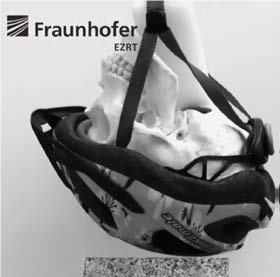Smart and Healthy Living
“High-speed X-ray”: New technology records dynamic processes
The Development Center X-ray Technology EZRT of the Fraunhofer IIS has developed a technology for the simultaneous recording of internal and external structures in dynamic processes.


The investigation of structures that are subject to unique dynamic changes – e.g. in failure and deformation analyses, flow and mixing processes in fluids or functional tests for airbags – is an important step in many product development and optimization processes. To record the processes that are otherwise too fast for the human eye, imaging methods with high temporal resolution recording more than 1000 images per second are applied. Until now, however, it has been necessary to decide whether to use highspeed cameras to observe the outer structures or X-ray technology to observe the inner structures. In addition, temporally high-resolution X-ray imaging is so far only possible under highly specialized laboratory conditions.
Technology allows more precise analyses
With its new technology solution, the Development Center X-ray Technology EZRT makes it possible to record both structures in parallel. This enables precise nominal- actual value comparisons and offers the potential to optimize product quality, especially in the pre-development phase of new products.
Development of optimized X-ray detectors
With a detector area of 40 × 40 cm², the measurement setup of the demonstrator covers an image section of 30 × 30 cm². In principle, however, the technology can be scaled to almost any size. The system has already proven its potential in various experiments and has e.g. been tested on various helmets in a cooperation with the sporting goods manufacturer Uvex Sports.
You can watch the videos of this experiment here.
Last modified: